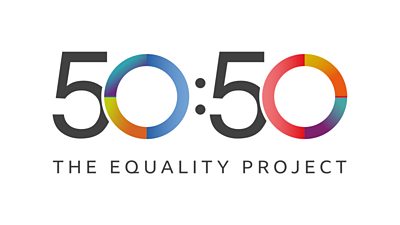To establish the weights for different groups several sources of information were used.
To establish the weights for different groups, we relied upon the expertise gleaned through our work at the Annenberg Inclusion Initiative. The Initiative documents the inequities faced by women, people of colour, the LGBTQ community, and individuals with disabilities throughout the film/television/digital content landscape, in the music industry, and in film criticism. In doing so, we also illuminate the barriers facing different groups and work to identify opportunities and solutions for change.
Several sources of information were used to create the weights, including UK Census data from 2011 and supplementary reports on different topics. In particular, data on population and , were from the 2011 Census, and data on disability from the , published in 2014. Weighting for disability relied upon the difference in employment between working-age disabled and non-disabled people (30.1%). Information on sexuality was taken from an report from 2018, and on gender identity from published in 2019.

Data on class was derived from an of the Great British Class Survey, and specifically the nationally representative survey results reported in Savage, M. et al., 2013. The statistic on prevalence of adverse mental health came from the Mental Health Foundation’s 2016 report, . Finally, differences related to gender and ethnicity were derived from the Runnymede Report, (Khan, 2020), which provides details on the wage gap between different groups.
The values for players in the race were determined by establishing several profiles of individuals who may be part of the UK workforce.
In most cases, weights were established using the value associated with the proportion of the population affiliated with traditionally less-represented groups. A slightly different method was used for weights related to gender and ethnicity. Here, existing pay gaps were averaged across underrepresented groups and the resulting proportions used as the weight. The goal of utilising this data in this way is to provide a visual illustration of privilege rather than a specific numerical estimate of disadvantage, and weights should be interpreted as such.
The values for the other players in the race were determined by establishing several profiles of individuals who may be part of the UK workforce. Here, we envisioned what individuals across several demographic groups might provide as answers to the 20 questions that make up the race. These are intended to illustrate how people from a variety of backgrounds might experience privilege at work and in society. All are designed to serve as examples, rather than an absolute reflection of a single individual’s experiences.
Thanks to Dr Katherine Pieper and the team at USC Annenberg Inclusion Initiative for providing the methodology and research to support this tool.
Discover more...
-

Reflecting our world
Inspiring organisations around the globe to create content that fairly represents our society. -

Making a difference
Bringing together leaders, talent, companies and institutions all around the purpose of effective allyship. -

Plotting the future
Five pillars to accelerate the change needed to ensure entertainment is inclusive of all voices in the future.

